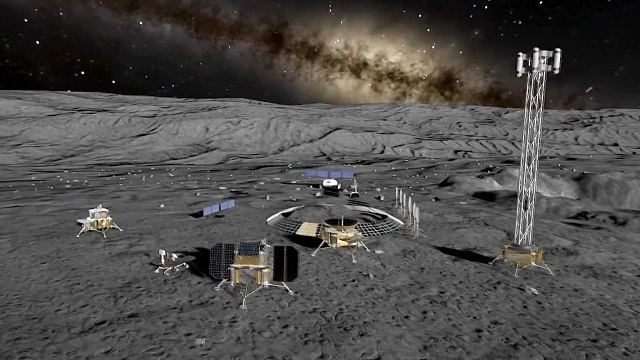Scheduled for launch in 2025, China’s Chang’e-7 mission is set to explore the Moon’s south pole, a region believed to contain water ice. This ambitious project is a crucial step in China’s vision of establishing a permanent lunar research base.
China’s Chang’e-7 Mission Objectives
The mission’s primary goal is to detect and analyze water ice deposits at the Moon’s south pole. Scientists consider these deposits essential for future lunar habitats, providing resources such as:
- Drinking water for astronauts.
- Oxygen production for life support.
- Rocket fuel, reducing dependence on Earth-based supplies.
Revolutionary Flying Robot Technology
One of the mission’s highlights is an advanced flying robot that can leap, crawl, and fly across the Moon’s challenging terrain. Unlike conventional rovers, this robot:
- Uses rocket propulsion for maneuvering.
- Features a six-legged design for stability on rugged surfaces.
- Is equipped with solar-powered instruments for in-depth environmental analysis.
This technology enhances mobility, allowing scientists to explore previously inaccessible areas.
Why Lunar Water Matters
Water is a game-changer for space exploration. The ability to extract and utilize lunar water could:
- Support long-term human missions on the Moon.
- Enable fuel production for deep-space travel.
- Reduce mission costs, making space exploration more sustainable.
The Significance of the South Pole
The Moon’s south pole stands out due to its permanently shadowed craters, where ice may have been preserved for billions of years. Exploring these frozen reservoirs could unlock valuable insights into the Moon’s history and its potential as a resource hub.
Future Prospects of China’s Chang’e-7 Mission
The Chang’e-7 mission is a stepping stone toward China’s 2030 goal of a lunar research station. A successful mission would:
- Lay the groundwork for crewed Moon landings.
- Strengthen China’s role in global space exploration.
- Drive international cooperation in lunar research.
The Global Race for the Moon
Countries worldwide are ramping up their lunar ambitions. The search for resources, scientific discoveries, and strategic advantages is shaping the next era of space exploration. As China advances its Chang’e program, the Moon is becoming the next great frontier for humankind.




